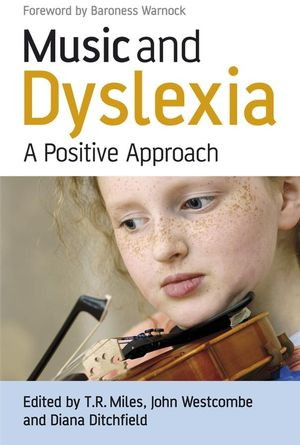

Most ebook files are in PDF format, so you can easily read them using various software such as Foxit Reader or directly on the Google Chrome browser.
Some ebook files are released by publishers in other formats such as .awz, .mobi, .epub, .fb2, etc. You may need to install specific software to read these formats on mobile/PC, such as Calibre.
Please read the tutorial at this link: https://ebookbell.com/faq
We offer FREE conversion to the popular formats you request; however, this may take some time. Therefore, right after payment, please email us, and we will try to provide the service as quickly as possible.
For some exceptional file formats or broken links (if any), please refrain from opening any disputes. Instead, email us first, and we will try to assist within a maximum of 6 hours.
EbookBell Team

5.0
68 reviewsThis is a sequel to the highly successful Music and Dyslexia: Opening New Doors, published in 2001. The field of dyslexia has developed rapidly, particularly in the area of neuropsychology. Therefore this book focuses on these research advances, and draws out the aspects of music education that benefit young dyslexics. The contributors also discuss the problems that dyslexic musicians face, and several chapters are devoted to sight-reading and specific strategies that dyslexics can use to help them sight-read.
The book offers practical techniques and strategies, to teachers and parents to help them work with young dyslexics and dyslexic musicians.Content:
Chapter 1 Dyslexia and other Developmental Differences (pages 1–10): Tim Miles
Chapter 2 Things that can Go Wrong (pages 11–16): Tim Miles
Chapter 3 In and around the Classroom (pages 17–25): Christine McRitchie Pratt
Chapter 4 Classroom Rhythm Games for Literacy Support (pages 26–44): Katie Overy
Chapter 5 Early Years: Deirdre Starts to Learn Piano (pages 45–54): Olivia McCarthy and Diana Ditchfield
Chapter 6 Winning over the Reluctants (pages 55–56): Christine McRitchie Pratt, Diana Ditchfield, Sheila Oglethorpe and John Westcombe
Chapter 7 Can Music Lessons Help the Dyslexic Learner? (pages 57–67): Sheila Oglethorpe
Chapter 8 Parallels between the Teaching of Musical and Mathematical Notation (pages 68–74): Tim Miles
Chapter 9 The Paperwork (pages 75–81): Diana Ditchfield
Chapter 10 Sight?Reading (pages 82–91): Sheila Oglethorpe
Chapter 11 Sight?Reading and Memory (pages 92–99): Michael Lea
Chapter 12 Ten Top Tips and Thoughts (page 100): Nigel Clarke
Chapter 13 Can Computers Help? Matching the Inner with the Outer Ear (pages 101–105): Adam Apostoli
Chapter 14 Positive Connections Across the Generations (pages 107–116): Annemarie Sand and John Westcombe
Chapter 15 Similarities and Differences in the Dyslexic Voice (pages 117–123): Paula Bishop?Liebler
Chapter 16 Thirty?Seven Oboists (pages 124–136): Carolyn King
Chapter 17 Suzuki Benefits for Children with Dyslexia (pages 137–142): Jenny Macmillan
Chapter 18 Dyslexia: No Problem (pages 143–148): Diana Ditchfield
Chapter 19 Insights from Brain Imaging (pages 149–161): Katie Overy
Chapter 20 Music Reading: A Cognitive Neuroscience Approach (pages 162–170): Lauren Stewart